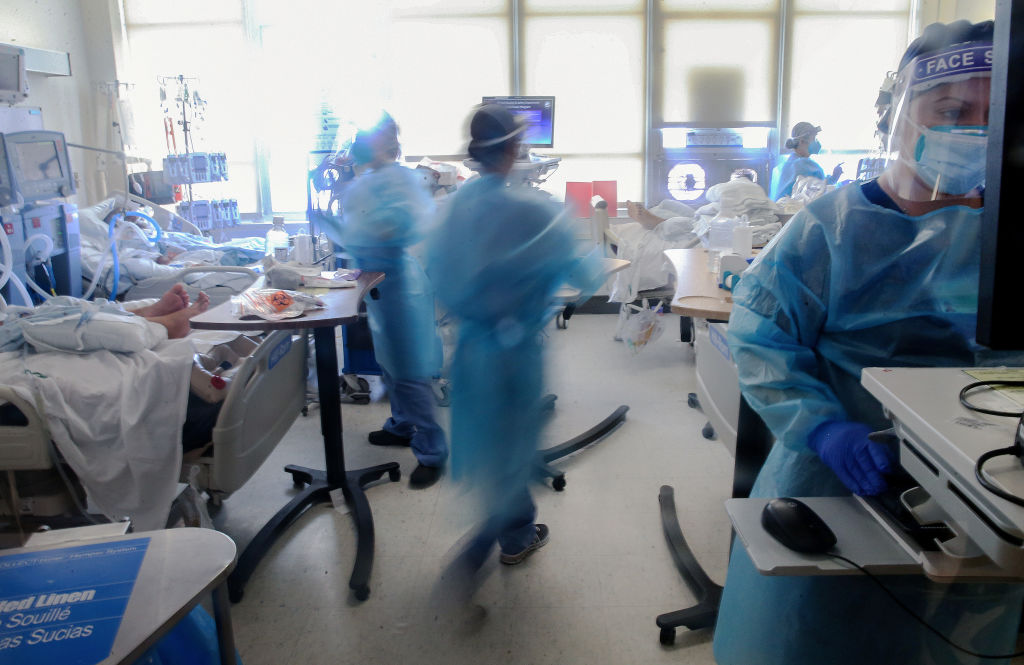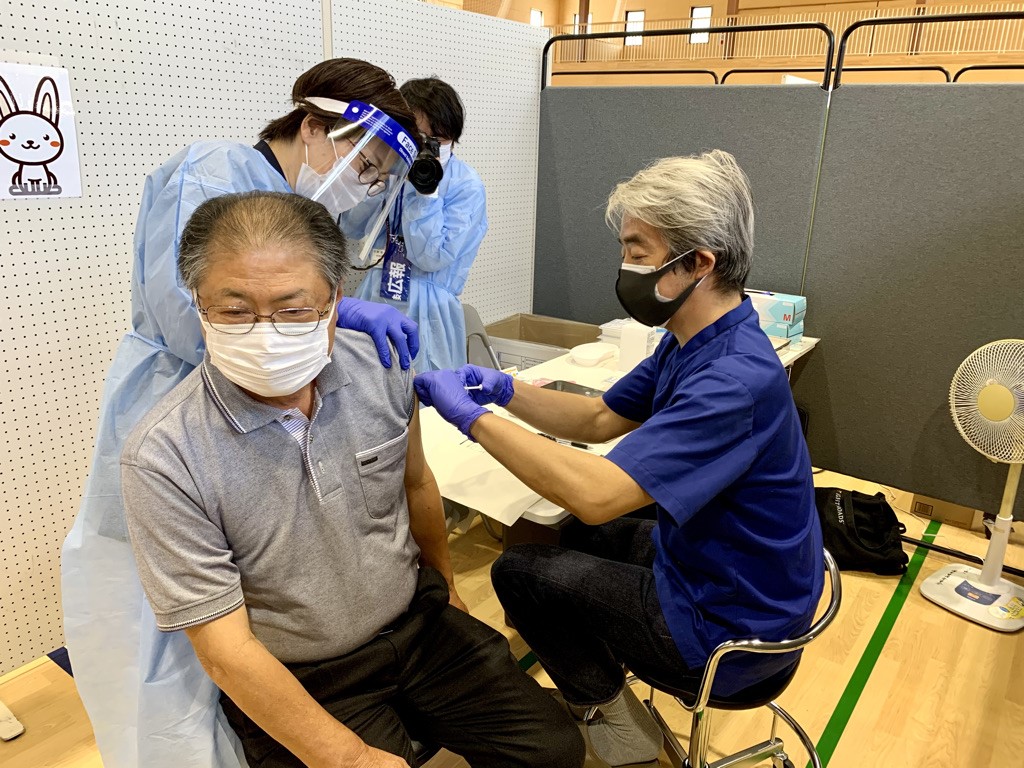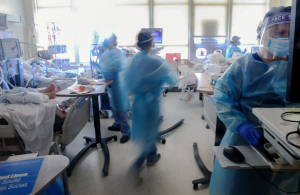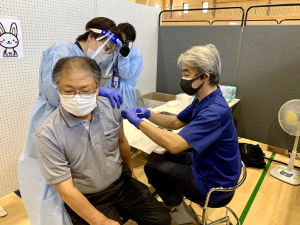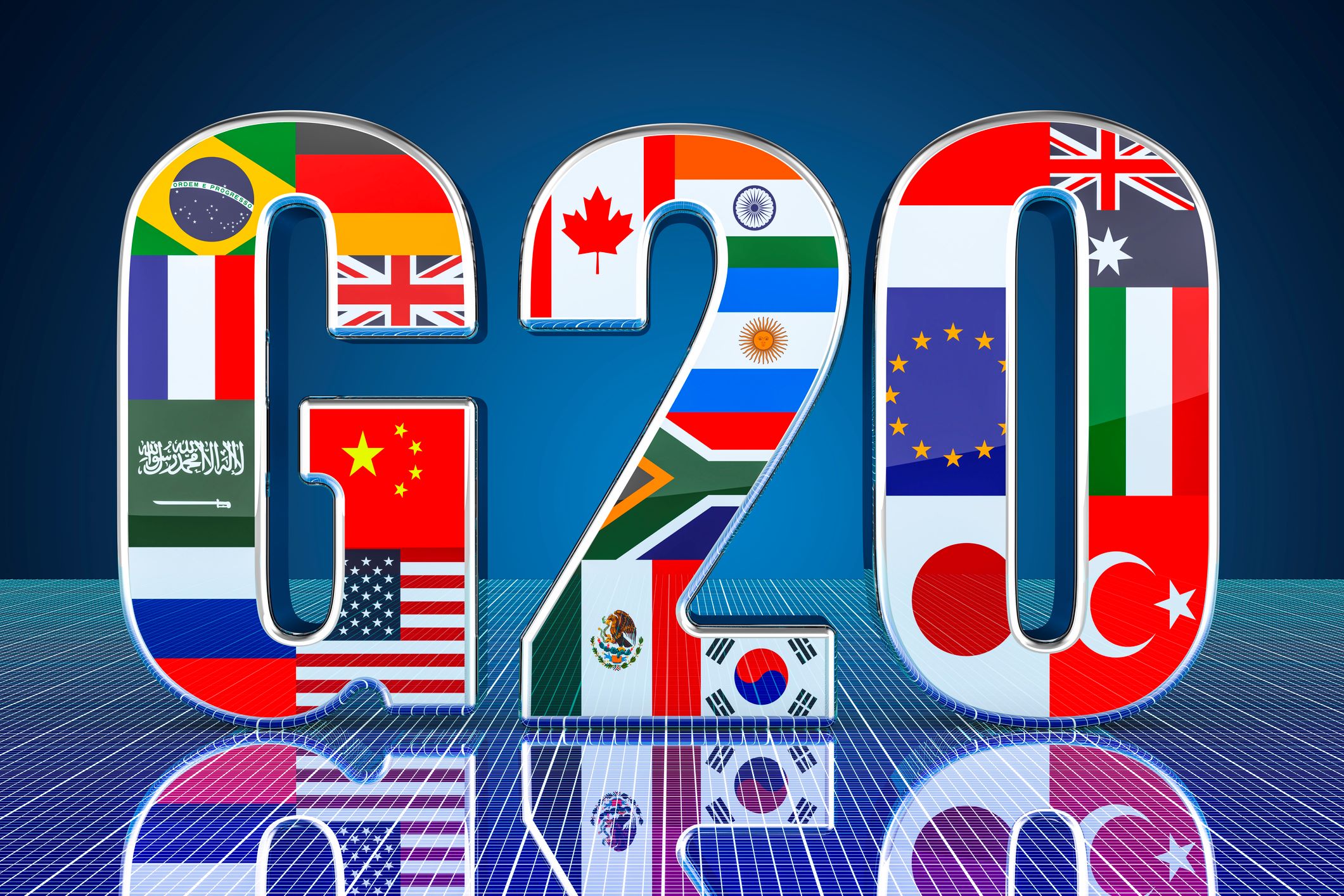
Five Global Health Recommendations for Japan’s Future: The G20 New Delhi Summit and Beyond
September 28, 2023
R-2023-050E
Recent changes to the global landscape have prompted proposals for a new geological epoch.[1] Unprecedented threats to human security[2] have also emerged that include not only the COVID-19 pandemic but also such tumultuous events as Russia‘s invasion of Ukraine. They have precipitated great economic turmoil, resulting in stagnation, inflation, supply chain disruptions, energy and food security instability, and the emergence of financial instability risks—all constituting multifaceted challenges. Furthermore, the world must grapple with mounting instability driven by climate change, urbanization, overpopulation, escalating inequality, and other issues that have hitherto eluded adequate resolution.
In this precarious milieu, the peril to human health has reached unparalleled heights, reigniting the debate surrounding the role of global health in safeguarding human well-being amid various crises. Simultaneously, a renewed focus has emerged regarding the societal benefits engendered by good health as a social protection system. Beyond enhancing overall health standards, such a system serves as a bedrock for societal stability. The capacity for individuals to navigate their daily lives without physical and mental trepidation stands as a linchpin of societal equilibrium. Hence, the pivotal query is how to redefine global health in its role as a social protector within an increasingly volatile society.
Against this backdrop, the G7 Hiroshima Summit convened in May 2023. One of the paramount issues addressed was the future contours of global health. And in September, the G20 New Delhi Summit was held. This report endeavors to deliberate upon the significance of global health during this tumultuous era. It also delves into the potential contributions of the G20 as a collective entity to the realm of global health. Furthermore, it elucidates the role that Japan, as a member of the G20, should aspire to play, both domestically and globally, in this opportune moment.
Characteristics of the G20 and the Role It Ought to Undertake
The G20 is an assembly of 19 nations and one region, the European Union, collectively representing two-thirds of the global population, 90% of the world’s gross domestic product (GDP), and 80% of global trade. Due to the magnitude of its population and economy, the G20 wields substantial influence over the world‘s economic and financial landscape. Similar to the G7, the G20 convenes heads of state and high-level ministerial representatives, rendering it capable of making pivotal decisions on global economic policies and crisis responses. Notably, unlike international organizations‘ binding decisions, the G20‘s deliberations are typically nonbinding. This informality and flexibility have enabled the G20 to emerge as a swift responder to global crises in recent years.
Traditionally, the G20‘s primary role centered on decisions concerning the global economy and finance, given its size and economic prowess. However, in the light of its assembly of high-level representatives vested with the authority to make definitive governmental decisions, the G20 has extended its purview. In recent years, it has ventured beyond economic and fiscal matters to address a spectrum of international concerns, including climate change, global health, and development issues. Notably, the G20 presidency is now being held by countries that can be said to be the core of the emerging economies—Indonesia in 2022, India in 2023, and Brazil in 2024—and there is a strong sense that the voice of the Global South, quite different from the traditional G7 group of developed countries, is being heard.
Disparities between the G7 and G20 with respect to policy effectiveness and agenda setting can be summarized as follows:
1. Implementation of Policies within Member Countries
The effectiveness of policies enacted within member countries is pivotal to addressing global health, environmental issues, and other worldwide challenges. Success of those efforts, whether aimed at reducing greenhouse gas emissions or countering antimicrobial resistance (AMR), hinges upon the degree to which member countries implement their policies. In this regard, the G20‘s track record in implementing national policies is comparatively weaker than that of the G7. A study conducted by the University of Toronto revealed that the G7 achieved a 76% implementation rate of its Joint Declaration commitments, whereas the G20 lagged behind at 71%.[3] This discrepancy arises from the G20‘s varied member backgrounds, which in turn results in reduced willpower and feasibility for policy implementation when contrasted with the G7.
2. Policy Effectiveness on a Global Scale
Despite relatively weaker national policy implementation, the G20‘s capacity to coordinate and implement global-scale policies may surpass that of the G7. Effective global coordination necessitates participation from a critical mass of states willing to cooperate. Decision-making within a forum hosting a substantial number of countries, such as the G20, is conducive to global coordination, surpassing the capabilities of smaller international organizations like the G7. The rise of the Global South, particularly as seen in the G20‘s leadership, underscores the G20’s enhanced potential in contrast to the G7. The G20’s extensive reach, encompassing a myriad of regions and nations, surpasses the G7’s scope. Additionally, the G20 may offer unique contributions different from the G7. For instance, the national interests advocated by the Global South are more pragmatic compared to the G7’s stance. The fact that India, the chairing country of the G20 this year, was able to put together a strong joint declaration with considerable compromise from its member countries contrasts with the fact that the G7 maintained its position as an international organization based on principles, such as by having ousted Russia from the G8 in the past. The G20’s approach to maintaining its platform, accommodating countries and regions with differing ideologies, contrasts with the G7’s principles-based international organization. Considering this example, the G20 holds substantial potential for meaningful contributions.
3. Decision-Making Grounded in Issue Interconnections
The G20’s uniqueness lies in the markedly distinct economic, social, and political backgrounds of its member countries in comparison to the G7. Consequently, the G20 places greater emphasis on recognizing the interconnectedness of various issues (issue linkages). This perspective is evident in the Joint Declaration in New Delhi, which characterized the Ukraine conflict as “highlighting human suffering and negative impacts on international food, energy security, supply chains, financial stability, etc.” It underscored issues concerning the G7 and those outside the sphere of China and Russia. In the domain of global health, akin to previous instances when low- and middle-income countries raised concerns about intellectual property rights related to virus strains while developing influenza vaccines, the G20 may illuminate unexpected connections between specific field issues and other domains. Decision-making founded on these issue linkages might heighten the complexity of the decision-making process but simultaneously present an opportunity for resolution by involving a myriad of stakeholders.
As mentioned, the G20 will have an enormous impact not only on the global economy but also on all global issues. Japan, as a member of the G20, must actively participate in its discussions and also promote solutions to domestic issues that are in line with the discussions at the G20.
In the light of the above, the following section will focus on five areas of global health that are expected to be of great importance for the G20: (1) healthcare financing for crisis response, (2) utilization of ICT and generative AI in healthcare, (3) climate change and health, (4) antimicrobial resistance (AMR), and (5) drug discovery ecosystem. This report will make recommendations on what Japan should do to advance these issues by taking advantage of the outcomes of the G20. The G20 Health Ministers’ Meeting was held in Gandhinagar, India, on August 18–19, 2023, prior to the G20 Summit, and these were all identified as priority issues to be addressed by the G20 in the outcome document of the Health Ministers’ Meeting. These are also issues that are likely to be a source of friction between high-income countries, on the one hand, and low- and middle-income countries, on the other, and in this sense, it is highly significant that these policy issues were discussed at the G20.
Recommendation 1: Healthcare Financing for Crisis Response
(1) Facilitate further mobilization of private funds in the area of PPR (pandemic prevention, preparedness, and response)
Sufficient financial resources are needed to strengthen pandemic prevention, preparedness, and response (PPR) for future pandemics. It is not that the WHO and other international organizations lack the financial resources to respond to pandemics; the issues are the small size of existing funds and cumbersome procedures. Considering the total amount of funds required for PPR, there is a limit to what the public sector alone can do, and mobilization of funds from the private sector should be actively sought.
At the 2016 G7 Ise-Shima Summit, Japan proposed the establishment of a Pandemic Emergency Financing (PEF) Facility at the World Bank as a funding mechanism for crisis response, based on the experience of the Ebola epidemic in West Africa. The PEF is a pandemic emergency fund in which the World Bank will use the proceeds from derivatives transactions with insurance companies and investment in pandemic bonds to fund initial response to infectious disease outbreaks. Whereas conventional public health crisis response funding has relied largely on donor contributions, the PEF has attracted attention as a highly innovative mechanism for bringing in market funds in a contingency. However, the PEF is subject to strict requirements, for example, it cannot be triggered until an epidemic has been ongoing for at least 12 weeks and the number of infected people has reached a certain level. Despite the importance of initial response in health crisis management, it has long been pointed out that the PEF is not triggered until after a pandemic has already progressed, a contradiction.
This PEF was naturally utilized for COVID-19 starting at the end of 2019, but as mentioned above, it was not able to play as much of a role in mitigating the pandemic as expected due to the length of time required for payment and the strictness of the triggering requirements. However, financial issues related to PPR remain unchanged to this day: (1) public funding alone limits the total amount of funds available, (2) rapid and flexible mobilization of funds is necessary, especially in the initial response to a public health crisis, and (3) deriving funds only from donor contributions is insufficient as a funding mechanism. As Japan led the discussion on the PEF in 2016, it should consider how market funds can be mobilized quickly and flexibly in a contingency, taking into account the lessons of the PEF.
(2) Japan should lead the discussion on surge financing based on the experience of the G20 and the finance-health policy dialogue
The Pandemic Fund was established in response to COVID-related discussions at the G20 in 2021. It focused on preparing for future pandemics, such as training medical personnel and developing medical systems, though, and some have pointed out that it did not adequately address the two remaining aspects of PPR, namely, prevention and response.
Containment efforts at an early stage through the intensive allocation of resources are particularly important, and this necessitates having a sufficient amount of funds for rapid and flexible use (surge financing). However, the conventional framework centered on international organizations, including the PEF, is insufficient in terms of flexibility and mobility (the decision-making process, for example, is complicated when making contribution decisions). At the G7 Finance and Health Ministers’ Joint Session held in Japan in May 2023, ministers agreed to consider a new “surge financing” framework that would provide the necessary funds in a timely and efficient manner. At the G20 Health Ministers’ Meeting held in August, agreement was reached to establish a new financial assistance system for surge financing.
Discussions on surge financing are likely to accelerate in the future, but the lessons learned from the PEF mentioned above must be fully taken into account. Furthermore, the details of how to integrate the G7 and G20 discussions, how to establish a specific mechanism for financial contributions, and how to collect the enormous amount of funds, estimated to total about ¥10 trillion, are still under discussion. Japan first proposed the G20 finance-health policy dialogue, which is the basis for this discussion, at the G20 Osaka Summit in 2019, when Japan held the G20 presidency. Japan should lead international discussions based on its experience.
Recommendation 2: Use of ITC and Generative AI in the Medical Field
There is no need to explain the significant role that information and communication technology (ICT) has played in recent years in the fight against infectious diseases and in medical care. Online medical services have continued to expand, and access to healthcare services has become possible across national borders. The resumption of international travel during the COVID-19 pandemic was enabled through the development of digital passports offering proof of vaccination and negative tests. The bases for the sharing and distribution of such information are the interoperability of personal medical data across national borders and assurances of the trustworthiness of such data. In Europe, for example, the European Health Data Space (EHDS) concept has been proposed, and legislation is being developed to enable access to medical data within the EU.
India has also begun to expand India Stack,[4] a data distribution infrastructure using Aadhaar, a national ID, outside India, which includes a healthcare data distribution infrastructure (Health Stack). Furthermore, the momentum of development of generative AI is also remarkable, and it will only be a matter of time before this technology is put to practical use in the healthcare domain. At the same time, although there is a movement toward the establishment of rules for generative AI, not limited to healthcare, the discussion is still in its infancy, and it is necessary to carefully advance the discussion of such rules, including ethical aspects, in agreement with the development of the technology. Against this background, the Japanese government’s Headquarters for Medical Digital Transformation Promotion recommends the following initiatives.
(1) Promote medical DX in Japan
In Japan, the introduction of contact verification applications such as COCOA has revealed the country’s lag in healthcare DX. Japan should play a role in promoting investment in digital infrastructure in the healthcare sector, and at the same time, take advantage of the momentum for healthcare DX that has grown as a result of COVID-19 to move Japan’s lagging healthcare DX forward. This includes the development of general medical information systems, infrastructure for telemedicine, and the development and implementation of applications in the medical field. In advancing Japan’s medical DX, a model that can be referenced globally should be presented, taking into account that some parts of the world are more advanced than Japan, not only in developed countries but rather also in low- and middle-income countries. In the light of the digital divide and the disparities among countries, it is important to note that Japan’s position is not necessarily that of an honors student among developed countries, which is why it is important to be able to show examples of DX practices that can be used as a reference by all.
(2) Advance internationally accepted rulemaking
The delays in Japan’s healthcare DX are evident not only in COVID-19 measures but also in such areas as the coordination of regional healthcare information during peacetime. From the perspective of trust building, it is necessary to agree on basic guidelines for interoperability, data privacy, and security. In Japan, following the revision of the Next Generation Medical Infrastructure Act in May 2023, discussions are underway on the development of rules for medical data utilization, from entrance regulations centered on consent at the time of data acquisition to exit regulations centered on assessments of appropriateness at the time of data use. Where trusted rule formation is required in the public domain in the utilization of generative AI, Japan should take the lead in promoting the use of secure data storage and transmission methods, establishing data protection regulations, and supporting the formulation of ethical guidelines for the use of digital health data. Furthermore, if discussions at the G20 are to be considered, Japan should continue to keep pace with other countries and present ethics and laws before the rest of the world, as the Next Generation Medical Infrastructure Act was revised in May and rules for the use of medical data are being developed in Japan.
(3) Promote international collaboration
Given the momentum for international collaboration, as seen in such movements as the Global Digital Health Partnership (GDHP) and the WHO’s Global Digital Health Certification Network, Japan should take the lead in strongly promoting data collaboration as an advocate of the concept of international data distribution, namely, Data Free Flow with Trust (DFFT). In this context, Japan should strongly promote data linkage, as it is the only country that advocates the DFFT concept for international data distribution. The G7 proposed the Institutional Arrangement for Partnership (IAP), an international framework to implement the priorities for DFFT, and it is expected that data linkage beyond corporate and national borders, which is one of the pillars of the IAP, will be promoted in the healthcare domain. In this case, autonomous and decentralized data governance that can ensure trustworthiness based on diverse values is required.
Recommendation 3: Climate Change and Health
The healthcare sector’s climate footprint[5] represents 4.4% of total global emissions (6.4% of total emissions in Japan). The healthcare sector is the fifth largest emitter on the planet, and the sector as a whole needs to decarbonize.
(1) Decarbonize healthcare facilities
Specific targets should be set and action plans developed to promote decarbonization in healthcare facilities in Japan.
-- For example, the Greener NHS program in Britain has set a goal of achieving net zero emissions by 2040. In Japan, the Japan Medical Association, the Japan Hospital Association, and other organizations have been making efforts, but the healthcare sector has yet to set a goal at the national level. The Ministry of Health, Labor, and Welfare (MHLW) and the Ministry of the Environment (MOE) should take the lead in setting a deadline for achieving net zero emissions in the healthcare sector and in setting a concrete roadmap for achieving it.
-- Emissions from the healthcare sector are mainly (1) direct emissions from medical facilities and medical vehicles, (2) indirect emissions from purchased energy sources, such as electricity, heating, and cooling, and (3) emissions from the supply chain of pharmaceuticals and medical equipment. Given that (3) is particularly prevalent (roughly 70%), it is important to set targets and formulate plans that involve the entire supply chain in the healthcare sector, rather than simply reducing emissions from medical facilities. This means rethinking the allocation and distribution of medical resources in domestic medical institutions.
(2) Build medical facilities that are resilient to climate change and disasters
In order to respond more quickly and flexibly to health risks caused by climate change, it is necessary to assess risks according to specific hazards. Just as in the much-debated concept of “hospital resilience,” the resilience of the healthcare system is not measured simply in terms of staff numbers and medical supplies; the designation of a base hospital during disasters is not the answer to all problems. Specifically, appropriate steps must be taken to deal with health hazards related to climate change, such as typhoons and floods. Measures are also needed to deal with the increasing number of heat stroke patients and to develop heat stroke warning systems, emergency and disaster medical systems, and air-conditioned facilities in urban planning. Concrete measures should also be taken in such areas as the use of alternative energy sources at medical institutions during power outages and the provision of remote medical care during disasters.
(3) Advance urban planning with co-benefits in mind
-- While the negative aspects of curbing greenhouse gas emissions, such as economic impact, are often emphasized, promoting such measures can also provide benefits to health. For example, promoting vehicle emission controls can have a direct impact on mitigating air pollution and reducing traffic accidents, as well as generating secondary benefits, such as encouraging people to use public transportation, increasing physical activity, and preventing obesity. In addition, the rapid urbanization taking place in developing countries has led to population concentration, which can promote the spread of infectious diseases, so it is important to incorporate medical and public health perspectives into urban planning from the drafting stage.
-- Japan has experienced many disasters and heavy pollution in the past. Based on these lessons, urban planning and disaster-resistant city development are being promoted today with an awareness of the need to both reduce the environmental burden and improve health. Such know-how should be proactively shared with other countries.
Recommendation 4: Antimicrobial Resistance
Estimates reported in the medical journal Lancet in February 2022 put the estimated number of deaths worldwide directly attributable to AMR at 1.27 million in 2019. This figure exceeds the number of deaths from HIV/AIDS and malaria. At the current rate, the number of deaths from AMR will reach 10 million by 2050, most of which will occur in Asia and Africa. In particular, the aging of society is expected to increase the number of people with urinary tract and other infections, which will increase demand for antimicrobial agents and make the impact of AMR more serious. Since the majority of AMR issues stem from market challenges, it is naturally important to further accelerate various efforts to optimize the market, but in addition, the following efforts should be promoted.
(1) Further involve industry in AMR control
The “one health”[6] perspective sees the majority of antimicrobials being used in animals worldwide are not intended to treat these animals but to promote their growth. A specific roadmap should be developed to reduce antimicrobial use in the food supply chain, including fast food chains and retailers.
(2) Promote linkage with investors
In Japan, the New Grand Design for Capitalism and Framework Policy 2022 include the promotion of impact investment aimed at solving specific social and economic issues. AMR measures should be positioned within this trend.
(3) Promote research, development, and transfer of technologies that contribute to AMR control
Timely delivery of appropriate antimicrobials to patients is important for AMR control, but most healthcare facilities do not have sufficient technology to do so, and diagnosis is slow (typically requiring 48 to 72 hours to determine antimicrobial susceptibility). It is important to shorten the time required for pathogen identification and antimicrobial susceptibility identification through technological innovation and to disseminate such technology so that it becomes more readily available, especially in resource-poor, low- and middle-income countries. Japan should promote the development of such technology and actively promote the transfer of such technology and human resource development in low- and middle-income countries.
(4) Establish a system to regularly update basic techniques for treating infectious diseases that contribute to AMR control
Although technological innovation has helped speed up definitive diagnosis and appropriate administration of antimicrobial agents, Gram staining should be performed at the time of diagnosis, and antimicrobial agents should be selected after considering the causative organisms at the start of treatment. If such basic medical care is not performed and broad-spectrum antimicrobial agents are administered in the dark, it will be difficult to combat AMR, even with technological innovations. It is necessary to ensure that basic infectious disease treatment skills are incorporated into medical education and continuing education and updated regularly, and that local medical institutions collaborate to share information on antimicrobial susceptibility and discuss antimicrobial selection at medical institutions within the community.
(5) Stabilize development and production of basic antimicrobials
A problem in infectious disease practice in recent years has been the lack of incentives for the development and production of basic antimicrobials, resulting in instability in R&D and the supply chain. Considering the future demand for antimicrobial agents, especially with multidrug-resistant bacteria in mind, it is essential to stabilize R&D and the supply chain.
Recommendation 5: Drug Discovery Ecosystem
In order to realize the “100-day mission” discussed at the G7 summit in 2021, which aims to commercialize vaccines, therapeutics, and diagnostics within 100 days of the issuance of the WHO PHEIC (public health emergency of international concern), highly effective and safe therapeutics and vaccines and other medical countermeasures (MCMs) will be required. While the COVID-19 pandemic saw innovation in drug development, it also created a large gap in access to global public goods between developed and developing countries.
Japan had lagged behind Europe and the United States in research and development of both vaccines and therapeutics against COVID-19, and in response to lessons learned, the Strategic Center of Biomedical Advanced Vaccine Research and Development (SCARDA) was established. However, its R&D functions are limited compared to similar organizations in other countries, as was pointed out at the G7 Hiroshima Summit in July. However, even after the G7 and the G20 discussions, there is still no vision on how to fundamentally solve the drug discovery ecosystem in Japan and how to strategically collaborate with the G20, which is sure to increase its presence in pharmaceutical R&D in the future. The vision is still unclear.
Furthermore, looking at the portfolio of the Coalition for Epidemic Preparedness Innovations (CEPI), whose establishment Japan spearheaded with substantial financial contributions, few Japanese pharmaceutical companies and startups have been able to participate. In this respect, Japan is falling behind not only in the G7 but also the G20. As recommended in May,[7] Japan should move away from an “all-Japan” approach, promote a horizontal division of labor from R&D to production, and build partnerships with related organizations in a flexible manner regardless of nationality.
(1) Promote R&D at the regional level
The Joint Declaration of the G20 Health Ministers emphasized the need to promote R&D and stabilize production lines for vaccines, therapeutics, and antimicrobial agents at the regional level. Japan has no counterpart in the Asian region in the G7, but in the G20, there are counterparts to promote R&D, including India, the current chair. In particular, India is expected to deepen its collaboration with the world’s largest vaccine supplier, the Serum Institute of India (SSI), which was the driving force behind the supply of vaccines for COVAX and was one of the first to develop a new coronavirus vaccine. Deepening intra-regional collaboration in this way will consequently promote technological exchange among researchers and will also contribute to the stabilization of intra-regional supply.
(2) Concentrate resources on our strengths to establish a horizontal division of labor
While efforts to promote R&D at the regional level should be broad-based, we must not neglect to accurately assess what our country’s greatest strengths are and selectively invest resources in those areas. To make effective use of limited resources and enhance Japan’s presence, we must selectively invest resources in areas where Japan is (or should be) strongest, while at the same time strengthening areas of weakness. In the area of R&D, Japan-based pharmaceutical companies should determine which drug discovery areas they excel in and invest resources to strengthen these areas. It has already been mentioned that Japan provides a large amount of financial support to CEPI and other international platforms. However, such financial assistance should be provided strategically to the extent that it contributes to the public interest. While providing financial support, Japan should clarify in its international health diplomacy and security strategies what kind of drug discovery ecosystem it wants to lead on a global scale and provide financial support that contributes to the realization of this goal.
(3) Uphold the drug discovery ecosystem as a science
We have already mentioned the importance of providing support for strengthening domestic R&D systems while conducting international cooperation. However, providing support to strengthen the R&D system does not mean that the national interest takes precedence over science. Unfortunately, during the COVID-19 pandemic, there were scattered opinions that we should continue to support therapeutic drugs and other products for which no scientific evidence exists, simply because they are domestically produced. When building a drug discovery ecosystem at the national or transnational regional level, what is most needed is a strong relationship of trust. If science is neglected in decision-making at the national level and only national interests are pursued, our country’s scientific credibility will be undermined. With multiple reports of research misconduct in clinical trials and other areas, Japan must avoid further erosion of trust in science. To this end, it is more essential than ever to prioritize the public interest while pursuing the national interest to maintain the drug discovery ecosystem as a science and to strengthen the science literacy of those with decision-making authority.
Senior Fellow Kazuki Shimizu also contributed to this article.
[1] Asahi Shimbun Digital, “[In the first place] What is the “‘Anthropocene”‘? How do you determine the geological age?” https://www.asahi.com/articles/ASR7C74KXR77PLBJ004.html. ““The Anthropocene refers to a period in which human economic activities and nuclear tests have caused significant environmental changes and altered natural systems.”“
[2] Ministry of Foreign Affairs of Japan, International Trends in the Field of Human Security, https://www.mofa.go.jp/mofaj/gaiko/oda/bunya/security/index.html.
[3] John Kirton, Brittaney Warren and Jessica Rapson, “Creating Compliance with G20 and G7 Climate Change Commitments through Global, Regional and Local Actors,” University of Toronto, April 1, 2021. http://www.g7.utoronto.ca/scholar/kirton-warren-rapson-isa-2021.pdf
[4] India Stack, https://indiastack.org/.
[5] Ministry of the Environment, “White Paper on the Environment, the White Paper on the Sound Material-Cycle Society, and the White Paper on Biodiversity,” Section 3: Marine Plastic Waste Pollution and Biodiversity Loss, https://www.env.go.jp/policy/hakusyo/r02/html/hj20010103.html. “One indicator of the impact of human activities on the global environment is called the ‘ecological footprint.’ It is an indicator that expresses the demand for ecosystem services needed to produce the resources we consume and to absorb the CO2 generated by our socioeconomic activities, expressed in terms of the area of the Earth.”
[6] Ministry of Health, Labor, and Welfare, 2022, One Health Collaboration Symposium, https://www.mhlw.go.jp/stf/seisakunitsuite/bunya/000131914_00009.html. “In the field of infectious diseases, it is estimated that infectious diseases transmitted from animals to humans (zoonoses) account for more than half of all infectious diseases in humans. There is growing recognition worldwide of the importance of a ‘one-health approach’ approach to combating zoonoses, in which stakeholders in the medical, veterinary, and other fields collaborate across disciplines, transcending the boundaries of research institutions and clinical practice.”
[7] Tokyo Foundation for Policy Research, “Six Recommendations for Japan as Chair of the G7 Hiroshima Summit,” https://www.tokyofoundation.org/research/detail.php?id=945.





